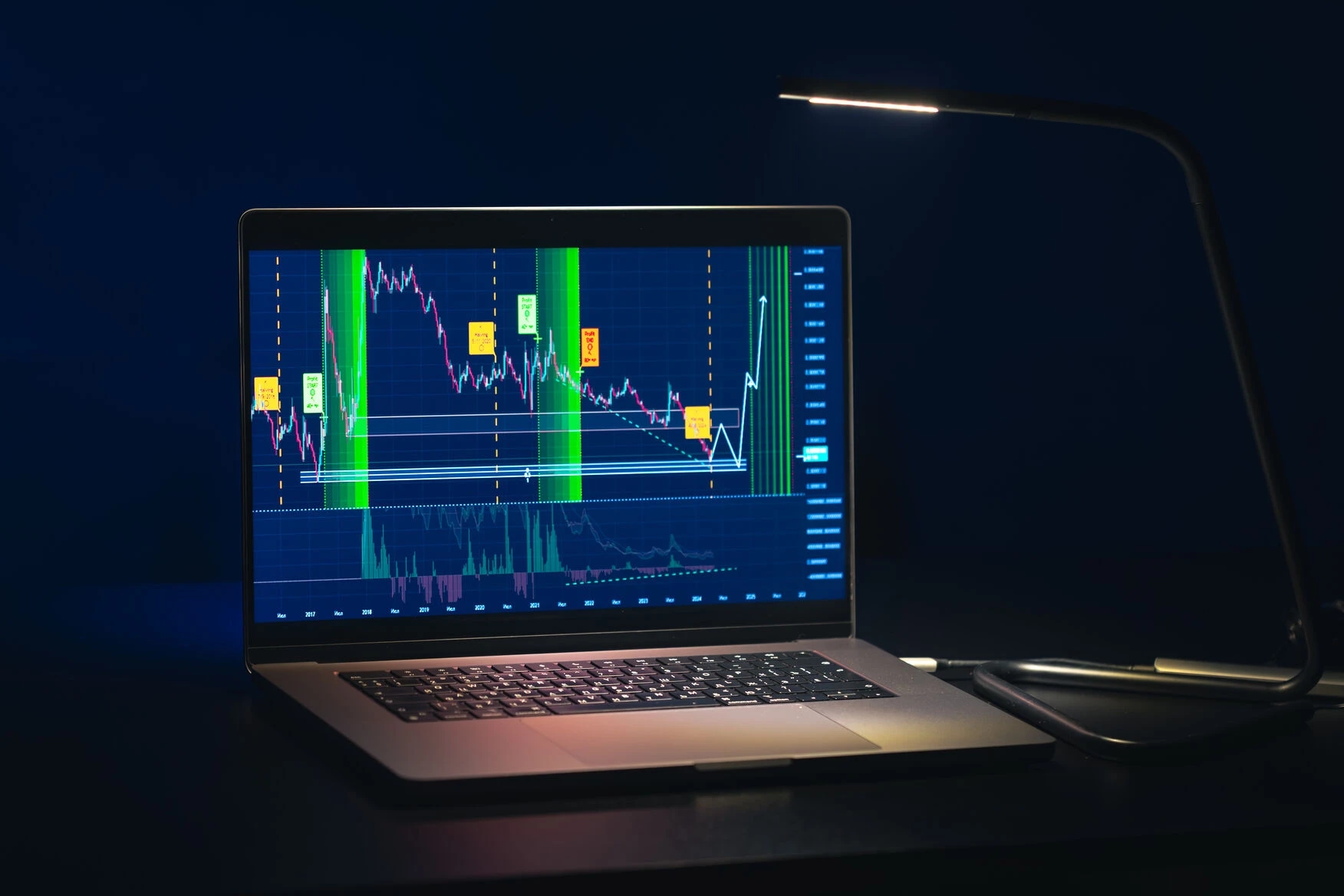How to Read Forex Charts for Beginners
Confused by Forex charts? Learn the secrets to reading them fast and start making smarter trades from day one.
Forex is the world’s largest money market, where traders usually buy and sell different currencies, such as the US Dollar and the Euro. Every day, trillions of dollars move around in this market. But if you’re starting, it might feel a little confusing at first.
So, to not get confused, one of the first things you can do is learn how to read forex charts. These charts will help you to see where the price has been and give hints about where it might go next. If you want to trade smart and not just guess, charts are your best friend.
In this beginner-friendly guide, we’ll walk you through the basics step by step. You’ll learn what these charts look like and how to read them easily, even if this is your very first time.
What is a Forex Chart?
Understanding different types of forex charts is important. In a forex chart, you will see how the price of two currencies changes over time. With its two lines:
- The y-axis (up and down) shows the price.
- The x-axis (left to right) shows time.
You can choose how much time to spend looking at the chart. For example, imagine you're looking at a chart for EUR/USD, which just means you're checking how many US dollars you get for one Euro. On the side of the chart, you’ll see the price. Across the bottom, you’ll see time, like minutes, hours, days, or even months.
Now, here is the interesting part: Forex charts describe the chart like a story. They will show you where the price has been and help you guess where it might go next. You might spot moments when the price jumps up or drops fast. These patterns can help you decide the best time to buy or sell.
So, instead of trading with your eyes closed, charts help you see what’s really happening, and that makes all the difference.
Why Forex Charts Really Matter
Forex charts aren’t just lines and numbers; they’re tools that can help you trade smarter. Firstly, you can spot patterns easily. You’ll start to notice when prices keep rising (an uptrend) or falling (a downtrend). Recognising these trends gives you a big advantage because it tells you where the market might be heading.
Second, charts are useful for managing risk. You can look at past price movements to set smart stop-loss points, which means you can limit your losses if things don’t go your way. Many traders even use tools like Forex Tester Online to practice this safely.
And finally, charts help you make better trading decisions. Key levels on the chart, like where the price often stops or bounces, can guide you on when to enter or exit a trade. These are called support and resistance levels.
In short, charts give you the full picture. They help you see the Forex clearly, plan your moves, and protect your money, all at the same time.
Types of Forex Charts
There are three main types of Forex charts that beginners should know about. Each chart type shows price information in a different way. You can try them all to see which one you like best.
Line Charts
If you’re new to forex trading, a line chart is the easiest type of chart to start with. In a line chart, you can see the closing price of a currency over time. These prices are joined together with a smooth line, so you can quickly see if the price is going up or down.
It doesn’t show too much information, which is actually a good thing when you’re just starting. You don’t need to worry about too many details. You can just look at the line and understand the basic trend.
But as they don’t show everything. You won’t see how high or low the price went during that hour, just the closing price. That’s why more experienced traders often use candlestick charts, which give more information.
So, if you want something simple to start with, go with a line chart. It’s the perfect way to learn the basics before moving on to more advanced charts later on.
Bar Charts
A bar chart is a step up from a line chart. It gives you more details than a line chart; here you can see how a currency moved during a certain time. Instead of just showing the closing price, it tells you four key things: The left tick shows where the price started, and the right tick shows where it ended. The top is the highest price, and the bottom is the lowest. Together, these points give you a quick look at how the price changed.
That’s why it’s often called an OHLC chart, short for Open, High, Low, and Close. Each bar looks like a vertical line with two small horizontal lines sticking out, one to the left and one to the right.
You can use bar charts for any period, from just a few seconds to a whole week. So, whether you're a fast-moving day trader or someone who prefers longer-term trading, bar charts can work for you.
These charts are great for spotting price movement and market mood. Bar charts help you see how much the price moved and how quickly. The taller the bar, the more the price moved during that time, which can signal volatility.
So, if you want to understand more than just the basic trend, a bar chart is a great tool. It gives you a clearer picture of what’s really happening with price, and that helps you plan your forex trades better.
Candlestick Charts
Candlestick charts are really popular with traders because this chart will help you to see a lot in a simple picture. In each candle, you will see what happened to the price during a certain time. The thick part, called the body, tells you if the price went up or down. If it went up, the candle is usually green or white; if it went down, it’s red or black. The thin lines above and below, called wicks or shadows, show the highest and lowest prices during that time. What’s best about candlesticks is that they help you see how the market feels and can even warn you if prices might change direction soon.
Understanding Timeframes in Forex Charts
Timeframes are how much time each bar or candlestick covers. You can choose different timeframes for your chart, such as:
- Tick charts: Update with every trade.
- Minute charts: Show prices every minute (e.g., 1-minute, 5-minute).
- Hourly charts: Show prices every hour (e.g., 1-hour, 4-hour).
- Daily charts: Show one bar or candlestick per day.
- Weekly or monthly charts: Show prices over weeks or months.
If you are a beginner, then daily or 4-hour charts are often the best to start with. They will help you to see important price movements without being too confusing, unlike shorter timeframes like 1-minute charts, which can change very quickly.
Key Elements to Look for in Forex Charts
As you get better at reading charts, you’ll want to learn about some important elements that can help you make better trading decisions.
Support and Resistance
Support and Resistance are price levels where the market often reacts.
- Support is like a floor; it’s where the price usually stops falling because buyers jump in.
- Resistance is like a ceiling; it’s where the price often stops rising because sellers show up.
Trends
Trends show you the overall direction the price is moving.
- Uptrend means prices are going higher.
- Downtrend means prices are going lower.
- Sideways means prices are just moving around without going clearly up or down.
Technical Indicators
Technical indicators are tools that help you spot price patterns. Things like moving averages or RSI can give hints if the price might go up or down. Indicators can make trade easier.
But don’t worry about them now. Focus on learning charts first. Once you’re comfortable, you can start using these tools to improve your trades. One step at a time.
Frequently Asked Questions
Here are some frequently asked questions by people:
What is the best chart for beginners?
Candlestick charts are the most popular and easiest to understand once you get the basics.
How do I know if it’s a good time to buy or sell?
Look for trends and patterns on the chart. Also, use other tools like indicators and news.
Can I trade just by looking at charts?
Charts are important, but also learn about news, strategies, and risk management.
Which timeframe should I use as a beginner?
Start with daily or 4-hour charts. They move slower, so it’s easier to follow what’s happening without feeling overwhelmed. Perfect for learning the basics.
Do I need to use technical indicators right away?
No, not at first. Focus on learning how to read charts. You can start using indicators later as you gain more experience.
Final Thought
If you want to trade forex, learning to read charts is super important. Charts help you see how prices move, so you can make better trading choices. Start with the basics, like line, bar, and candlestick charts. Try using daily or 4-hour charts to keep things simple in the beginning. Practice with a demo account so there’s no risk, and keep learning step by step. The more you practice, the better you’ll get, and soon you’ll feel more confident with every trade you make.

Suraiya Akthar Sumi
SEO Content Writer
Suraiya Akthar Sumi is a creative content writer, loves bringing ideas to life through engaging blogs and SEO articles.


